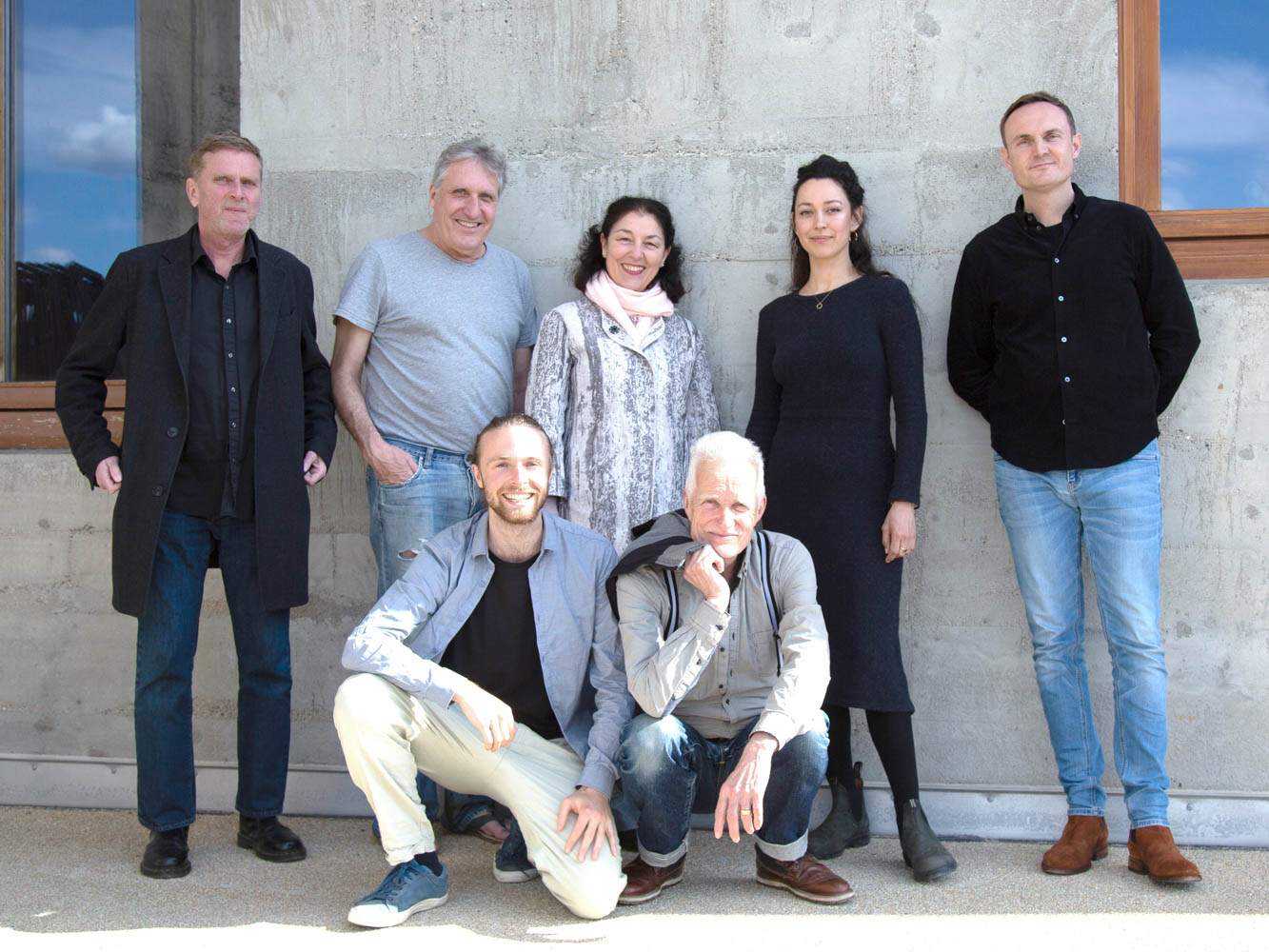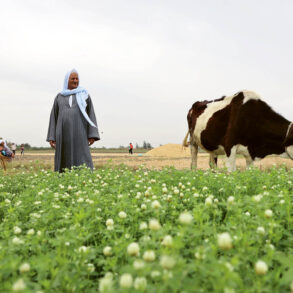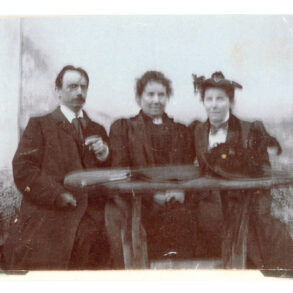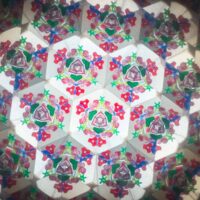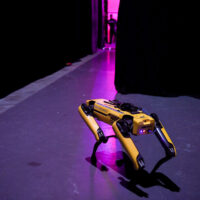This summer, the Goetheanum Stage will be performing all four of Rudolf Steiner’s Mystery Dramas from July 12 to 16. Gioia Falk is the overall artistic director and is in charge of the eurythmy, and Christian Peter is in charge of the acting. A conversation with both at the start of rehearsals. Wolfgang Held asked the questions.
In order to recruit new members for the acting ensemble, you issued an invitation for a big audition last year. What was the response?
Christian Peter Forty interested people came forward, and although many had a close relationship with the Mystery Dramas, they did not have German as their first language. These language problems were often compounded by age. While it is great that someone wants to devote the last few years of their career to art, it is seldom appropriate for building an ensemble.
Falk Yes, and some of those interested were still at the beginning of their training and without stage experience. That’s why we then approached actors and creative speech artists directly in order to recruit them for our project. This led us to a viable ensemble. We are very happy about that.
How do the younger ones fit in with your experienced group?
Falk They are unselfconscious and are able to fit into their new roles amazingly well. It is my impression that the big questions that Rudolf Steiner raises in the dramas are an existential part of their lives.
Peter Yes, it is a new generation that is now arriving. There are not many, but those who are joining now are connecting very quickly with what is already there.
The plan is now for three performance cycles – isn’t it?
Peter Yes, now in the summer, then Christmas 2024 and Christmas 2025. That’s the second half of a five-year plan. What will happen then? We will address this question in good time with the Leadership. The dramas are a central ambition of the Goetheanum. So we hope that our new take is viable and opens up access to this work for people.
What do you mean by ‘new take’?
Falk Our existing set design for the Mystery Dramas is very sparse, open-ended and is shaped by the players. Dialogue and togetherness are all the more important. We want to do that more intensively.
Peter We had one and the same production for almost a hundred years, which Rudolf Steiner created in Münich and Marie Steiner then took over. In the late 1980s, Walter Roggenkamp repainted it and made it technically better, but it still remained the original production. Now we have been performing the new production for barely fifteen years. We should continue to take the time to continue developing this production. In this respect it is understandable that in 2010 quite a few people were surprised, or at first even irritated, because the Mystery Dramas suddenly looked different. We are interested in focusing more on what is happening on stage and showing the dialogue of the characters, their interaction. This lives from out of the individual personalities and depends on how each individual person does it. And so I think it’s now actually quite a change, when Maria and Johannes are newly cast. Also new is that we change Johannes and Maria after the second drama.
What are your experiences with new audiences who are not yet familiar with the Mystery Dramas?
Falk At the last cycle, during Christmas 2021, we performed the unabridged version again. I was told that whole families with three generations were sitting in the audience …
Peter The Mystery Dramas are not for everyone. Every art form has its audience. This is also true of the Mystery Dramas. However, people who occupy themselves with spiritual existence will find endless ideas and inspiration in the dramas regarding the challenges of being human. Through our tours with individual scenes of the dramas, we have gained new interested people, including those who cannot travel to the Goetheanum for various reasons such as mobility or cost.

Is there a particular idea that you want to focus on? You gave the conference associated with the dramas the title ‘Meditation and Society’.
Falk We have our eye on the process. We want the actors to enter into the pictures and take the audience with them in the process. A lot happens in this respect before anyone even speaks. It’s about giving content to the pauses. I have the feeling that with this new start we can address this question once again, both in eurythmy and in the acting. Why does this figure appear at this moment? What does it trigger and what has preceded it? The interest of the new young actors helps us to approach things once more in a fresh way. So it’s not business as usual at all, but rather another field visit. This, after all, is closely related to the topic of the conference. Because meditative experience is equally an open process.
Does that mean a lot of text work?
Falk Not only in the thinking, however, but situationally. What kind of situation is this? Let us find our own inner picture for what Rudolf Steiner writes in each scene.
Peter Each of these protagonists goes their very own way, incredibly different from every other one. Being one-sided in this way makes them human but also vulnerable.
In ordinary conversation, meaningful things alternate with trivialities. It’s different in the Mystery Dramas: here, every line seems to count. How can this be put into a dramatic form?
Peter The interesting thing is that with Rudolf Steiner you can see that something develops as the dramas progress. The texts tend to be long at the beginning, and as a result the aspect of dialogue is somewhat lost. The strongest moments are the transition from one reply to the next. So it makes a big difference whether a four-page scene consists of four or of ten replies.
Falk I have this problem very much in eurythmy – we have even less drama and we have to solve it by decoding the individual moments, the situational. It becomes apparent that when you enter into a thought there is often a question that remains unanswered, which is then the subject of the next thought.
Peter When we are on tour with the Mystery Dramas and perform thematic collages of scenes at the different venues, these are abridged scenes. In the process we observe that scenes actually gain in drama by being abridged, some more so, some less so. Performing the Mystery Dramas unabridged is not a dictate from Rudolf Steiner. On the contrary, he often abridged texts and musical pieces for eurythmy. What is special in our case, though, is that when all the actors then play individual scenes in a condensed form this is based on their knowledge of and experience with the unabridged work. That is something quite different from just working with an abridged version.
When talking to the former Biel theatre director, Hans Amman, about the Mystery Dramas, he said that he missed the silence in the production. There was constant talking.
Falk I see it that way too. I think it’s coming. Today we have a longing for silence and feel very clearly how much happens in silence.
Peter Rudolf Steiner put everything into words, everything that happens is commented on. If we are to have silence in the Mystery Dramas, then something must remain unspoken.
Falk There is a form of silence that we take hold of afresh: before something happens, when there is a change of consciousness, the protagonist is in daytime consciousness and suddenly something else occurs. This is a moment of transformation that makes me sit up and take notice.
What does it mean for you to perform the dramas now at this time?
Falk How do they deal with each other? The dramas continually pose this core question of our time. The dramas call on us to work for peace. Not only to wish for peace, but to do something for it. After the third drama, all the characters should actually have gone their separate ways, but they maintain their connection.
Peter In general, the idea of reincarnation that runs through the dramas raises all contemporary questions about nationality and ethnicity to a completely different level. Alongside this enormous vastness, the dramas are always very close to the individual soul when the characters tell each other what they feel. This is the most obvious form of peace work.
Translation Christian von Arnim
Title image From left: Christian Jaschke, Christian Peter, Darius Matthies, Gioia Falk, Thomas Ott, Ioana Fărcăşanu, Andreas Heinrich. Photo: Simon Peter

